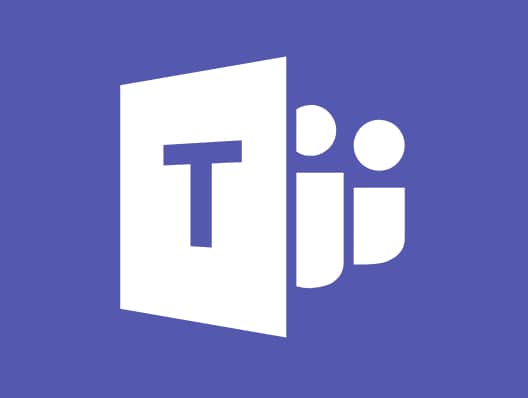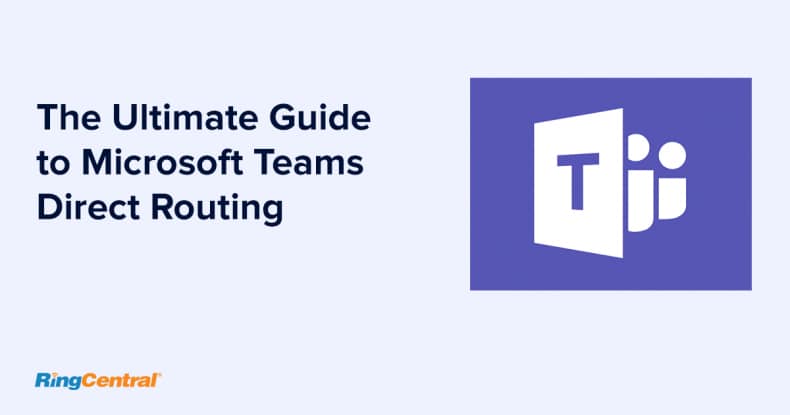The technological revolution that transformed the world of business has continued to gather steam. Think back to how you were working just a decade ago – the technologies you used and the way you did your job have surely changed dramatically even in that relatively short space of time.
Following the rise of remote working, we’ve seeing even more drastic change to how we work, communicate, and do business with one another. Features like video conferencing now play an ever more prominent role in our lives. Software such as Microsoft 365 is already well established among businesses around the world, but as we negotiate the opportunities and challenges of hybrid work, the ways in which we use it are changing.
Microsoft Teams, in particular, has been widely used by businesses as they adapt to the new normal of remote working. As well as being a conferencing and connectivity tool, it can also be a telephony solution if you purchase a Microsoft calling plan, allowing colleagues to make phone calls to one another and to clients. Teams calling plans allow people to reach landline and mobile numbers via the cloud.

However, Microsoft’s calling plans are relatively costly. At a time when so many businesses and other organisations are looking to cut costs wherever they can, it makes sense to explore alternatives. One such alternative is Direct Routing, which tends to work out considerably cheaper per user, per month than Microsoft calling plans. In fact more than 85% of Microsoft Teams Voice users choose Direct Routing over Microsoft Calling Plans.
It’s important to note here that the exact savings your business could make from Teams Direct Routing will vary; they’ll depend on its individual circumstances, its needs, and so on. Nevertheless, a lot of firms are already reaping the rewards of turning on a Direct Routing service. But many others aren’t, and don’t really know what it involves. As a result, they could be paying money they don’t need to, for calling plans that aren’t right for them.

In this guide, we’ll provide a comprehensive introduction to Microsoft Teams Direct Routing to hopefully answer all possible questions. We’ll start by explaining in more detail exactly what Direct Routing is and how it works. Then, we’ll outline some of the key benefits of Direct Routing, and discuss its advantages over other business phone systems. We’ll also explore how it’s used, what it means in this age of hybrid working, the potential savings it offers, and its add on features.
What is Direct Routing?
Microsoft Teams is perhaps best known as a medium for virtual meetings, video calls and instant messaging or chatting. While many organisations adopt Teams for workforce communication thanks to its integrations into the rest of the Microsoft suite, Teams is missing a critical component of collaboration – the humble phone call. The telephony in Teams is not yet enterprise-grade, suffering from low service level agreements (SLAs), limited international coverage and key reliability issues. Thus, there are two ways of making voice calls with Teams through the Microsoft 365 platform. You either sign up for a Microsoft calling plan or explore Direct Routing. It’s the latter that interests us here. So, what is Direct Routing?
In short, Direct Routing is a technology that allows you to use Microsoft Teams to make calls while retaining your existing provider, and thus your lines and minutes. You can also sign up for a new provider if that suits you and your budget, as new providers can also be cost efficient. Signing up for a Microsoft calling plan will cost you more than Direct Routing, not least because you may incur a penalty from your existing telephony provider for breaching your contract with them.
RingCentral’s Direct Routing offer, Cloud PBX for Microsoft Teams, is a fully managed, carrier-class solution that connects your Teams and Microsoft 365 deployment to PSTN networks. This allows your users to make and receive external phone calls from anywhere on any handset or device running natively in the Teams application.

Direct Routing is a cloud telephony solution enabling users to make and receive phone calls through the public switched telephone network (PSTN) or PBX or Cloud PBX to and from both landline and mobile numbers. Solutions such as RingCentral Cloud PBX for Microsoft Teams work by connecting your Teams and Microsoft 365 software to the relevant provider. This means that users can then make and receive external calls from any devices running natively via Teams.
With cloud telephony, businesses and other organisations are no longer reliant on a physical private branch exchange (PBX) on-premises. This would require a dedicated space and administrators to manage the system. Cloud telephony, on the other hand, sends calls to a cloud PBX where call routing through a succession of switches allows them to reach the intended recipients.
There are various advantages to this, the primary one being the enhanced user experience. Driving change in the public sector can be hard, especially when introducing new tools. If you have decided to use Teams for messaging and video, keeping users at the centre of the Teams experience is vital for successful adoption across your organisation. Building your phone capabilities natively into Teams is a great way to point all users to one experience. We’ll discuss the benefits of Direct Routing in more detail in the following section.

The benefits of Direct Routing
As we’ve already discussed, the most obvious benefit of Direct Routing is that it can work out much cheaper than signing up to Microsoft calling plans. As well as working out cheaper, it allows you to keep control over your inbound numbers and make your own decisions and deals on your calling plans. In addition, it cuts out the costs associated with on-site telephony hardware, which can be expensive to maintain.
Direct Routing enhances your resilience options in terms of not having all your services with one vendor (Microsoft). This makes it considerably more reliable as if Microsoft has an outage, you can at least still make phone calls. Direct Routing interconnects with the Microsoft Teams system and its own security and access tools, thereby giving you greater confidence that you’ll have more stable and dependable communications at your disposal, connecting your business to clients through SIP trunks and session border controllers (SBCs).
Another important benefit of Direct Routing is that it brings everything together in the same place. Previously, you might have found yourself moving between different tools and applications to make, answer, and transfer phone calls. Now, there’s no need for you to do that, because it’s all combined into one platform (natively in Microsoft Teams). This helps to make things much more convenient, consistent, and user-friendly, saving valuable time and unnecessary hassle.
Direct Routing is also favoured by businesses and a wide range of other organisations for its agility and flexibility. It’s simple to migrate and deploy, and as we’ve mentioned, it means there’s no need for physical PBX equipment on the premises (particularly beneficial for organisations working across multiple offices). Because it’s so versatile, Teams Direct Routing makes it simpler to adapt to remote working, as well as to introduce hot desking.

Better still, number porting allows you to port your existing phone numbers over to your cloud-based Direct Routing solution, and then use them globally across your business. This helps to rationalise your overall technology stack, allowing you to phase out obsolete or unnecessary tools. On top of this, it cuts down the number of vendors involved, substituting a smaller number of providers where previously there were numerous local carriers.
You might be a little apprehensive about what the migration process could potentially involve. It probably sounds like a lot of upheaval. But, as with cloud migration in general, it’s simple and stress-free. Your chosen cloud communications provider will port existing numbers and create new ones with the minimum of fuss. Their account managers and engineers will also be on hand to provide you with any assistance you require with regard to Direct Routing.
There’s been a lot of discussion about the technological transformation that’s currently ongoing and what this means for businesses. You’d be surprised, though, how many companies have neglected telephony – a vitally important technology. Too many businesses are still running on outdated, fragmented PBX systems when they could be reaping the rewards of Direct Routing instead.
Direct Routing use cases
Now that we’ve outlined how Direct Routing works and some of the potential benefits it can have, it’s worth discussing how it’s being used professionally. Businesses across the board can benefit from Direct Routing, and indeed a growing number are doing so. But it’s not just businesses that are taking advantage of it. Increasingly, it’s public sector organisations as well.
There are a number of good reasons why public sector bodies (such as government departments and local authorities) are embracing Direct Routing. Microsoft 365 is already very widely used in the public sector, which makes Teams Direct Routing a logical progression. Even more so now that a growing number of workers in the sector are working remotely.
Public sector organisations that have already adopted Microsoft Teams can use Direct Routing to connect their call functions (voice calls, voicemails, call routing, IVRs) with their Teams collaboration functions (messaging and video meetings) making their communications infrastructure robust and complete.
Resilience is another consideration for public sector organisations with cloud telephony. Downtime can harm service delivery and citizens’ well-being on multiple fronts, including loss of lives in moments of crisis, government reputation damage, and overall frustrated citizens with a lack of responsiveness. Internally, communication outages and other issues can also be costly, to the tune of an average of £50 million per year, according to the Society for Human Resource Management.

It’s also important to remember that these public sector bodies have been under quite severe budgetary constraints in recent years. With no end to that in sight, they’re having to cut costs and introduce efficiencies wherever they can. We’ve already discussed how Direct Routing can deliver sizable cost savings, and this is one factor that’s prompting public sector organisations to adopt it for themselves.
Microsoft Teams calling plans can, as we’ve noted, turn out to be quite expensive for large organisations. As public sectors are almost all aiming to cut down on unnecessary expenditure, then, it makes sense for them to explore other telephony options. Direct Routing offers them a cost-effective alternative, but it also offers improved call quality and greater overall system resilience.

Direct Routing and remote work
There’s been a lot of discussion about the future of work and what it might hold. Remote working, it seems, is here to stay. There are lots of advantages to remote working. It can allow businesses and other organisations to save on rents by allowing them to close office space. It can afford greater operational flexibility, and it can also boost staff retention because it’s so convenient for employees.
One thing that a lot of employers have worried about, however, is the impact it might have on productivity. Many managers have been quite reluctant to give up the oversight they have when working in the same physical space with their colleagues. While there’s also the process of transferring to remote work itself, which can take up time and resources.
Unified communications tools like Microsoft Teams are proving vital to maintaining productivity through remote working, by providing a single platform for communication. Teams saves remote employees from having to manage multiple standalone tools and apps, such as for video conferencing, business voice calls, instant messaging, file sharing, screen sharing, and so on, thus streamlining and simplifying communications.

We’ve already noted how Direct Routing saves employees who are working remotely the trouble of having to have their calls forwarded. This means that Teams users can make and receive reliable, high-quality calls from whichever internet-enabled device they’re using at home. That’s all while still being available on their regular work phone number.
As well as being convenient for employees, Direct Routing is – perhaps more importantly – convenient for customers and clients as well. It allows staff working from home to respond to customer calls quickly and efficiently. As such, customers continue to receive the same high standard of service that your staff would be able to provide if they were working from an office.
Direct Routing cost savings deep dive
Compared to Microsoft Teams calling plans, Direct Routing can deliver major savings. Pricing structures are much simpler with Direct Routing than they would be with a Teams calling plan. For example, as a case study, Direct Routing providers may offer per channel pricing. That allows you to pay only for the maximum number of concurrent calls you require, while providing your organisation with the call capacity it needs.
With Teams calling plans, a quota of minutes is allocated to each user over the course of the month. If you exceed this, that’ll force you to pay extra for a top-up (as you would with a pay-as-you-go mobile phone, clearly not the most convenient arrangement for businesses).
With Direct Routing providers, on the other hand, minutes are commonly pooled across users, so that you don’t end up with a situation where people who need minutes don’t have them, while those who don’t need them have a surplus.

It’s also important to point out here that in addition to the extra convenience you get when you choose Direct Routing, you also get impressive technical support into the bargain. Providers will assist you in getting your Direct Routing arrangements up and running, then offering ongoing support beyond the initial migration.
We’ve already pointed to the additional flexibility provided by Direct Routing. Providers will generally give your business or organisation considerable leeway in shaping your own bespoke system to suit your particular needs. You may need to integrate Direct Routing with contact centres, call recording, or real-time analytics, for instance. Ensure that your provider offers these other software tools and services, and that they can integrate them with Direct Routing.
Direct Routing voice quality and features deep dive
Microsoft Teams is renowned for its all-encompassing offering, and the fact that it brings so many different functions under one (virtual) umbrella. Direct Routing allows you to take full advantage of Teams’ functionality while also allowing you to make high-quality calls over the cloud and cut your phone bills substantially.
Why do you need enterprise-grade telephony? Businesses tend to make a higher frequency of simultaneous long-distance and international calls than residential VoIP users. Large organisations often need advanced call management, mobility and other special features geared towards improving efficiencies and service delivery.
RingCentral’s cloud telephony service is well established and recognised as a leader in the industry. Built-in features such as caller ID and call recording help streamline the end-user experience and eliminate the hassles and wasted time of native standalone apps.
Direct Routing with RingCentral can offer you more detailed call monitoring and reporting, giving you deeper insights into how your phone system is working. With Microsoft Teams, data is restricted to that obtained via the Microsoft client and its related tools.
A Direct Routing session border controller, however, is positioned between the Microsoft client, its endpoint devices, and your PSTN or SIP trunk provider. This provides much more data and allows you to keep a very close watch on call quality and consistency.
Furthermore, call media can be directly routed to your certified SBC (and away from Microsoft’s own data centres), decreasing the amount of network traffic while simultaneously improving call quality.
Another advantage is that your migration to Direct Routing from a PBX-based set-up can be done in phases. You can migrate users in groups or individually depending on what’s most convenient for your organisation. You should discuss your needs with your chosen provider so that they can undertake the migration process in a way that works for you and keeps disruption to a minimum.

Conclusion
In an economy that’s becoming more global all the time, enterprises need secure, stable, and reliable communication arrangements. The workers of today need to be able to communicate wherever they are, and on a plethora of different devices. Direct Routing is enabling them to do this, and in doing so it’s helping us all adjust to remote working.
It seems safe to conclude that remote working is here to stay, and the shift is accelerating. As businesses and public sector bodies alike adjust to this new normal, it seems as sure that more of them will find Direct Routing the ideal solution for their needs and their budget.
Originally published Nov 13, 2020, updated Jul 13, 2021

